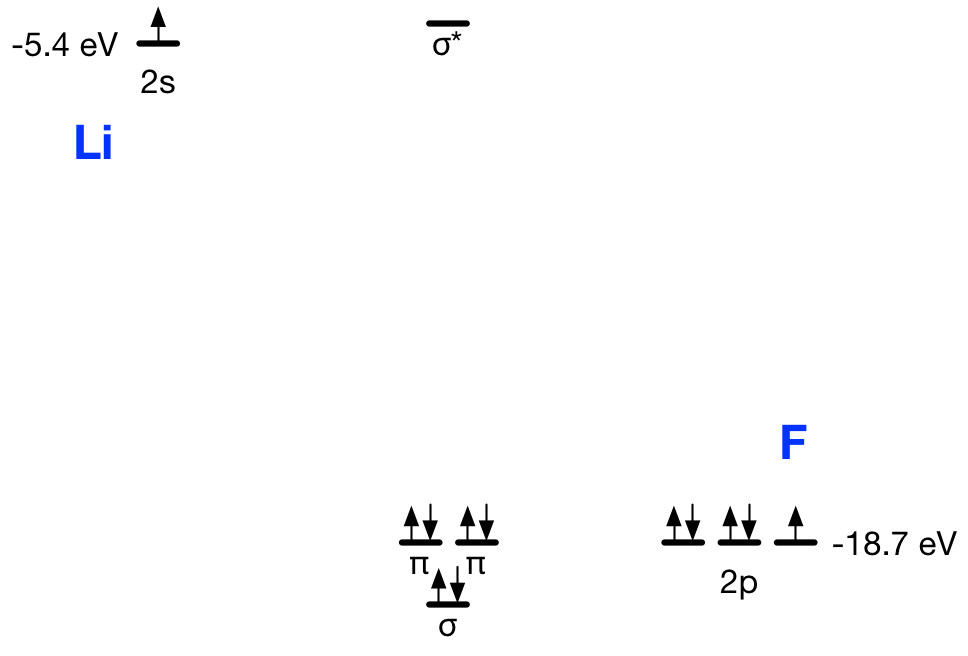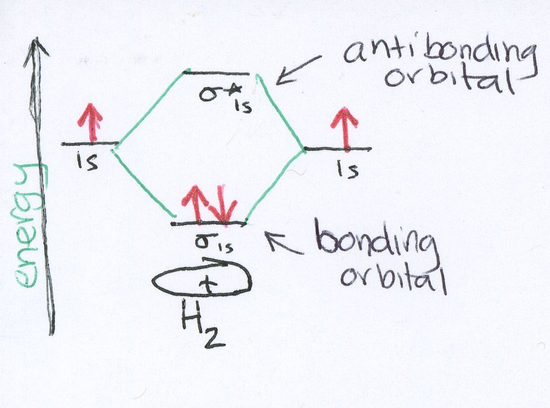Using your "conjugate" way of seeing two covalently bonded atoms as electrons, let's try $\ce{O_2}$ which gives you "$\ce{2O^{\bullet}}$". If you think about how the electrons are arranged in terms of electron configuration, you will see that $\ce{O^{\bullet}}$ has $\ce{[He]}2s^2 2p^4$ which is not a particularly stable electron configuration (if you only know the "secondary school electron configuration" you should recognise this as 2,6). Not having a full electron shell (2,8) means this is unstable.
If you do the same with $\ce{NaCl}$, you get $\ce{Na+}$ and $\ce{Cl-}$. Both of these have full shell electron configurations ($\ce{Na+}$ is $\ce{[Ne]}$ or 2,8; $\ce{Cl-}$ is $\ce{[Ar]}$ or 2,8,8). So the ions are indeed more stable in this sense.
However, relative stability of ionic and covalent bonding cannot be simply compared using your "conjugate" method, because you need to make sure that you are making the comparison under similar conditions. For example, you cannot really say $\ce{NaCl}$ is less stable than $\ce{O2}$ because NaCl dissociates into ions in water while $\ce{O2}$ does not, because the surrounding water molecules have a very strong dipole which will interfere much more strongly with ionic bonding (which is electrostatic) than covalent bonding in a homonuclear diatomic (which has no reason to dissociate into neutral radicals in water). You can possibly compare hardness of $\ce{NaCl}$ versus diamond, i.e. carbon that is purely covalently bonded, but graphite would not make such a good comparison because between the layers of graphite there are only weak Van der Waals interactions (and it is therefore softer because you are overcoming VdW interactions not covalent bonds). There are also special cases such as ionic salts with a particularly low melting point, and there are many examples of weak covalent bonds. You also want to pick examples with few confounding factors, such as large differences in electronegativity which can give ionic contributions to covalent bonds, or large differences in size and effective charge which can give covalent contributions to ionic bonding.
I will answer your question using two examples of giant lattices that show near-ideal ionic and covalent bonding: $\ce{LiF}$ versus diamond (with acknowledgements to Geoff Hutchison for the choice of LiF). Lithium, fluorine and carbon are all in period 2, so avoiding further complications due to differences in size such as comparing to $\ce{NaCl}$. I am "taking a shortcut" here by comparing boiling points, which is a bulk property that you can use for a giant lattice, because it is difficult to find a pure ionic diatomic.
$\ce{LiF}$ has a boiling point of 1909 K, while diamond sublimes at 3900 K. By this measure, it would appear that covalent bonding is stronger than ionic bonding in this case.
In $\ce{LiF}$, the distance between the lithium and fluoride ions is 202 pm*, while in diamond the distance between carbon atoms is 154 pm. In $\ce{LiF}$, the two oppositely charged ions are further away than the (positively charged) nuclei of any two carbon atoms in diamond that is held together by (negatively charged) electrons between them. What I am trying to point out is that, both forms of bonding involve interactions of positive and negative charges, but in covalent bonding the charges are much closer together, so the attractive electrostatic forces are much greater. This is why in this particular comparison, diamond comes out with stronger covalent bonding than the ionic bonding found in $\ce{LiF}$.
As I indicated in the third paragraph, there are many cases where the bonding within an ionic substance can be stronger or weaker compared to a covalent substance. This is why I have emphasised that everything that is discussed is only true for this particular comparison. It will be unwise to claim that one type of bonding is overwhelmingly stronger than another, because it always depends on what exactly is being compared. Given the near infinite combinations of atoms that can give rise to bonding that is ionic, covalent, and a mixture of the two, it would be difficult to make a full catalogue of covalent and ionic substances and compare these against each other.
*computed by taking half the distance of the cubic lattice.


